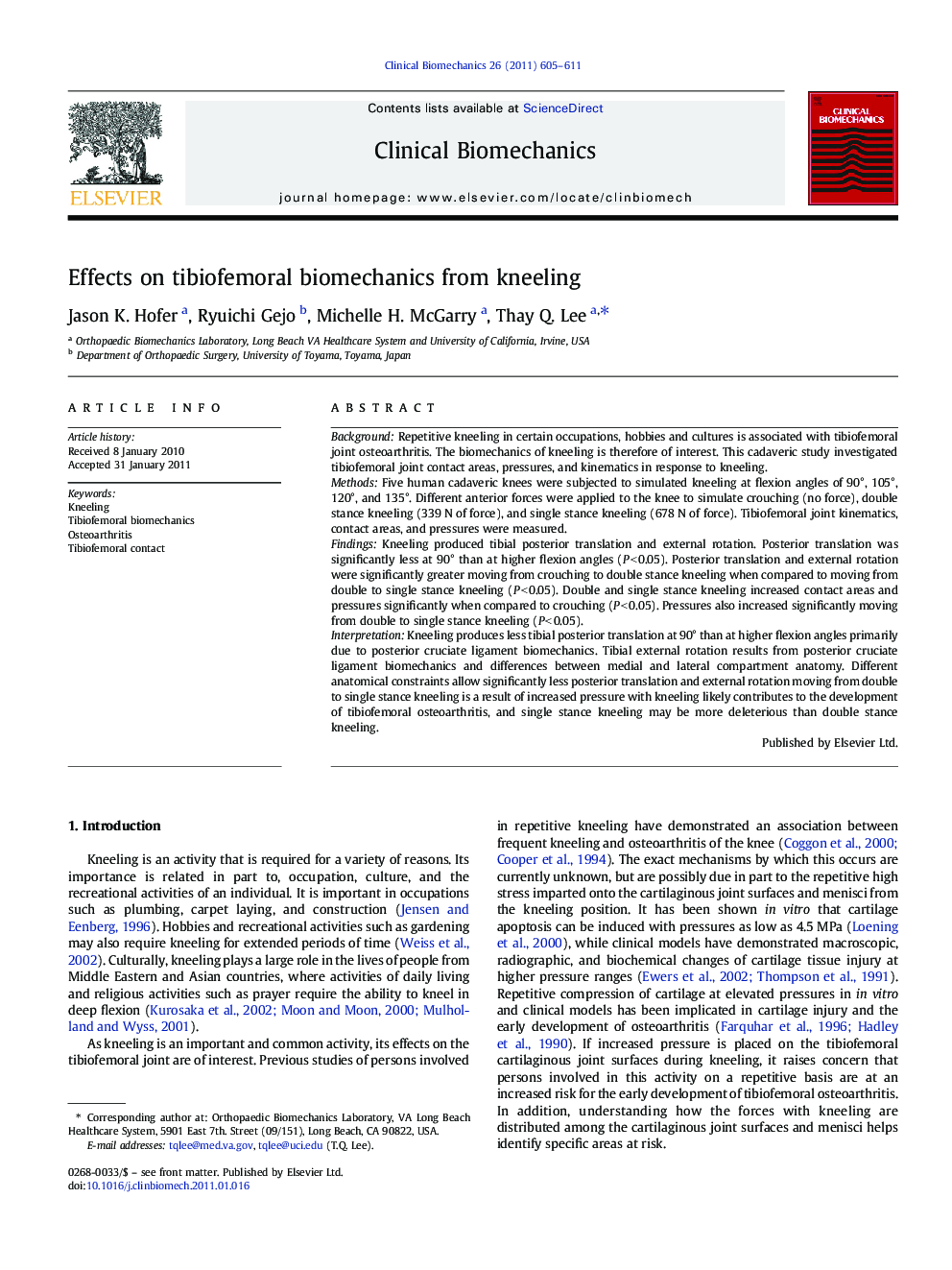| کد مقاله | کد نشریه | سال انتشار | مقاله انگلیسی | نسخه تمام متن |
|---|---|---|---|---|
| 4050581 | 1264944 | 2011 | 7 صفحه PDF | دانلود رایگان |

BackgroundRepetitive kneeling in certain occupations, hobbies and cultures is associated with tibiofemoral joint osteoarthritis. The biomechanics of kneeling is therefore of interest. This cadaveric study investigated tibiofemoral joint contact areas, pressures, and kinematics in response to kneeling.MethodsFive human cadaveric knees were subjected to simulated kneeling at flexion angles of 90°, 105°, 120°, and 135°. Different anterior forces were applied to the knee to simulate crouching (no force), double stance kneeling (339 N of force), and single stance kneeling (678 N of force). Tibiofemoral joint kinematics, contact areas, and pressures were measured.FindingsKneeling produced tibial posterior translation and external rotation. Posterior translation was significantly less at 90° than at higher flexion angles (P < 0.05). Posterior translation and external rotation were significantly greater moving from crouching to double stance kneeling when compared to moving from double to single stance kneeling (P < 0.05). Double and single stance kneeling increased contact areas and pressures significantly when compared to crouching (P < 0.05). Pressures also increased significantly moving from double to single stance kneeling (P < 0.05).InterpretationKneeling produces less tibial posterior translation at 90° than at higher flexion angles primarily due to posterior cruciate ligament biomechanics. Tibial external rotation results from posterior cruciate ligament biomechanics and differences between medial and lateral compartment anatomy. Different anatomical constraints allow significantly less posterior translation and external rotation moving from double to single stance kneeling is a result of increased pressure with kneeling likely contributes to the development of tibiofemoral osteoarthritis, and single stance kneeling may be more deleterious than double stance kneeling.
Journal: Clinical Biomechanics - Volume 26, Issue 6, July 2011, Pages 605–611